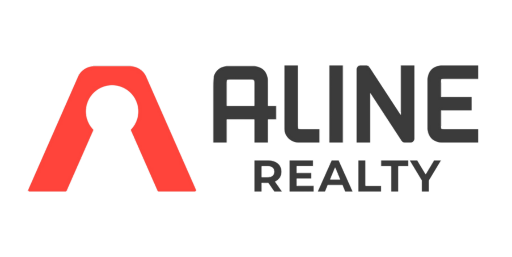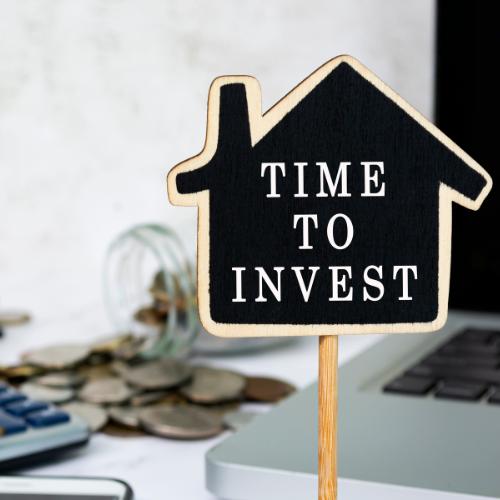What Makes a Property ‘Investor-Friendly’? Here’s What Really Matters

Are You Falling for Looks or Finding a Truly Investor-Friendly Property?
Do you know how easy it is to fall in love with a house just by looking at photos online? One minute you’re scrolling through listings, and the next, you’re daydreaming about that shiny kitchen, the fancy bathroom, or the cozy-looking living room. It’s fun, right? All the fresh paint and stylish staging can really pull you in. But here’s the thing: if you’re buying a property as an investor, you need to look past all of that. It’s not about how pretty the place looks. It’s about how well it can work for you, your goals, and your wallet.
On this blog article, we’re diving into what really makes a property investor-friendly. Spoiler alert: it’s not the marble countertops or trendy lighting. It’s the less exciting stuff that actually matters—like location, rental demand, and whether the numbers make sense. If you’ve ever wondered what to look for when buying a rental or investment property, this one’s for you. Let’s go through it together, step by step.
What is a Property Investor?
A property investor is someone who buys real estate to make money from it. They’re not buying a home to live in, but to rent it out, sell it for a profit later, or both. It’s all about turning that property into a source of income.
You don’t need to be rich or own a bunch of houses to call yourself a property investor. If you’re buying your first rental or planning to start with just one property, you’re already in the game. It’s about using property to grow your money, little by little. And it all starts with knowing what to look for.
1. Cash Flow Comes First
Let’s be honest. If a property isn’t making you money, it’s not a good investment. The whole point of buying a rental is to have more money coming in than going out. This is what we call cash flow. It’s how much money is left after you pay for all your monthly costs like your mortgage, taxes, insurance, repairs, and anything else that comes up.
If the rent you’re collecting doesn’t cover those expenses, you’ll be pulling money from your own pocket just to keep it going. And that’s not the goal. You don’t need to be great with numbers either. Just grab a pen or open a simple spreadsheet. Add up all your monthly costs, then subtract that from the rent you expect to get. If you’re left with a decent amount, that’s a good sign. You want a property that pays you each month, not one that gives you a headache.
2. Low Maintenance Means Less Headaches
Some homes look great in pictures, but once you step inside, it’s a different story. Old plumbing, a leaking roof, or outdated electrical work can turn into big repair bills fast. And those repairs can eat up your time, your money, and your patience.
As an investor, you want something that won’t need constant fixing. Look for homes that have been taken care of and don’t have any major issues. It’s okay if the place needs a few small updates here and there, but stay away from anything that feels like a full-blown project—unless you’re experienced and ready for the work. A low-maintenance property saves you stress and keeps your income more steady.
3. Strong Rental Demand
A good-looking house won’t help much if no one wants to rent it. That’s why rental demand is so important. You want to buy in a place where people are actively looking for rentals. Are the nearby rentals getting filled quickly? Are people willing to pay good rent in the area? Are new businesses, schools, or developments coming in?
These are all good signs that you’re in the right spot. You can also check how long similar rental listings stay online. If they’re getting snapped up fast, chances are your property will too. When there’s strong rental demand, you won’t have to worry about long vacancies or lowering the rent just to find someone.
4. Room to Grow (Equity, Not Just Plants)
Some of the best investment properties aren’t perfect, and that’s a good thing. A home with a little potential can be a great way to build value over time. Maybe the kitchen is a bit outdated, or the backyard needs some love. Small improvements like painting, replacing old fixtures, or upgrading appliances can go a long way.
If you can increase the value of the property without spending a fortune, that’s a big win. Not only can you raise the rent a little, but the property itself becomes more valuable if you decide to sell later. Always keep an eye out for homes where you can add value with simple, cost-effective changes.
5. Tenant-Friendly Layout
Let’s talk about layout. You could have a beautiful home, but if the rooms are oddly shaped, or the flow doesn’t make sense, renters might lose interest fast. People want a home that feels easy to live in. A good layout usually means two or three decent-sized bedrooms, a comfortable living area, a clean kitchen, and maybe a bit of outdoor space.
Extras like parking, a laundry area, or even just a bit of storage space can also help your property stand out. Think about what a tenant might need on a daily basis. If the layout is simple, clean, and makes sense, it’ll be much easier to keep your tenants happy—and happy tenants are more likely to stay.
6. Reasonable HOA or None at All
If you’re buying a place that’s part of a homeowners association, make sure you read the rules carefully. Some HOAs don’t allow rentals, or they place strict limits on what you can do. On top of that, some of them charge high monthly fees that can eat into your profits.
Before you move forward, ask for the HOA documents and go through them. Make sure the rules are fair and that rentals are allowed. A high HOA fee or too many restrictions can turn what looks like a great investment into something you regret. If you can find a similar property without an HOA, that might be even better.
Don’t Get Distracted by the Shine
Just because a property looks amazing in photos doesn’t mean it’s a smart investment. It’s easy to get pulled in by nice lighting, stylish furniture, or a brand-new kitchen, but those things don’t always tell the full story. An investor-friendly property is more than just good looks. It has solid structure, steady income potential, and long-term value that actually helps you grow your money. The best deals are often the ones that may not be flashy but make sense on paper. So when you’re searching, try not to let the shiny features steal your attention. Take a step back, check the numbers, and focus on what really matters—how well the property will work for your goals.
Finding a property that’s truly investor-friendly isn’t about getting lucky or chasing something perfect. It’s about knowing what matters, doing your homework, and focusing on the basics that actually bring results. You don’t need to have a ton of money or years of experience to get started. What you do need is a clear plan, the patience to look beyond the surface, and the confidence to trust your gut when something feels right. Keep it simple, take your time, and don’t rush the process. The more you understand what makes a property work, the easier it gets to spot the good ones. So stay focused, stay curious, and believe in what you’re building. You’ve got this—and your next great investment might be just around the corner.
Got questions or need a hand finding the right property? Reach out to A-Line Realty and let’s talk about what you’re looking for. We’re here to help make your investment journey simple, smart, and stress-free.


0 Comments